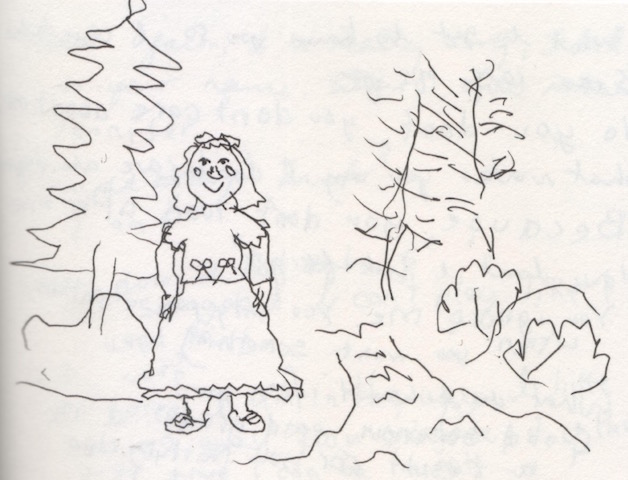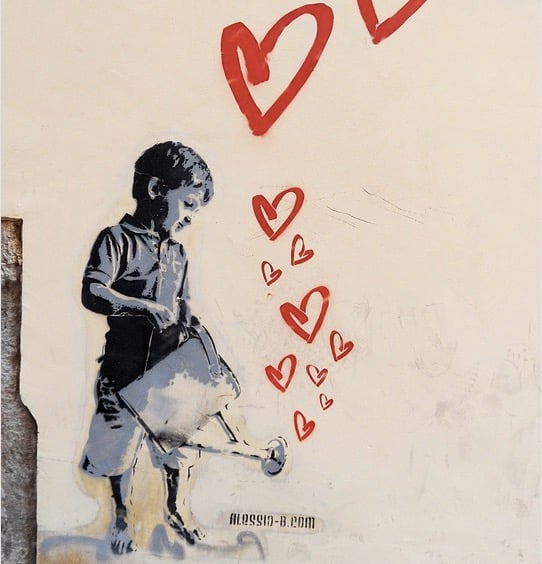Me: Hello, what is your name?
Inner child (I.C): Jennifer.
Me: How old are you, Jennifer?
IC: I’m six.
This was the beginning of the first conversation with my inner child.
My inner child is age six. I wondered why she is six years old?
I could sense within myself that this was the age I started to deeply understand the feelings of embarrassment and inadequacy, cementing associations that would last into adulthood.
The conversation continued:
Me: How does it feel to be six, Jennifer?
IC: Not so good. I can’t play like I used to.
Me: What do you like that you feel you can’t do anymore?
IC: I like to look at things, see what they do. I play with my cat. I stack things. I think about things. I make things, even if they have no point. I just like to do it.
Slowly, the memories start to flood in.
Joyful, spontaneous acts around this age became either “good” or “bad,” and therefore served as evidence of my worth. Their expression sometimes (but not always) caused the withdrawal of love.
I began to tread more carefully.
I no longer painted and created something authentic and messy at age six, because it was now graded and determined which class I would be put into: one for adept, four for challenged.
I stopped skipping spontaneously through the park for no reason whatsoever, because good little girls walked calmly and nicely.
When I cried, it was no longer uncontrollable as soon as the feeling washed over me. It was done quietly, when alone, because I had to stay strong and keep it together.
The conversation continued…
Me: I want to know you so I can take better care of you.
IC: No you don’t. You don’t care about me. You don’t look after me.
Me: How don’t I care about or look after you?
IC: You ignore me. You only pay attention to me when you want something.
Me: What do I want from you?
IC: Good behavior. Good grades. I am a result for you; nothing else matters.
I began to realize that I had suffered a devastating loss of my sense of curiosity, wonder, and play into adulthood because of how deeply I believed that “doing” and “creating” were pointless unless these could be added to my C.V. of achievements.
I had become disconnected from my own feelings and how to express them. This became clear as I noticed how incredibly angry my inner child felt about the injustice she felt had taken place.
As an adult, I had an issue with anger: I never expressed it. Rather, for years, it had been displaced into self-sabotaging acts, fanning the flames of my inner critic, and I developed an incredible, unfocused terror that something bad would happen when I was angry.
I could see why I had pushed closed the door: the more my outer self became worried about my inner child’s spontaneous acts of expression, the firmer I shut the door on her, making her even more angry so she would fight even more to be heard. It was a tug-of-war that my outer self had eventually won, but in the end there was no real triumph—I had only suffered because of it.
No wonder my inner child didn’t trust me to look after her.
The conversation continued…
Me: What do you need most from me at this time?
IC: I need your tenderness. I need your presence. I need to feel safe.
Me: Is there anything else you need me to know?
IC: I am a person. See me.
Me: Thank you. I am flawed. I fail in many ways. I want you to feel valued. I’m sorry. Let’s have more talks like this.
As an adult reflecting on this process, I felt saddened and guilty about how long I had locked away my inner child. I had turned away from her when what she wanted most of all was to be seen, truly and completely, and to feel worthy not merely for her achievements, but simply for existing.
Below is the exercise I used to open my connection with my inner child, and that I use on an on-going basis to deepen and heal our relationship. All it requires is a pen/pencil/crayons and some paper!
How does your inner child look?
1. Sit quietly and close your eyes. Picture a beautiful place that both you and your inner child can visit together in your imagination. You should feel safe and comfortable—just go with what feels right for you.
2. Open your eyes, and with your non-dominant hand (the hand you do not usually write with), draw a picture of your inner child. You don’t need to rush or put pressure on yourself; simply reconnect with your inner natural flow.
Here’s how my inner child looked:

3. Now, using your dominant hand (the hand you usually write with, or the “parent” hand), and a separate piece of paper, spend a little time reflecting on this process:
How did it feel while drawing your inner child? Were there any frustrations or blocks?
How do you feel now when you look at the picture?
Where do you think certain characteristics of the child came from, whether in physical or facial expression, or location, or outfit?
How old is your inner child?
I was surprised how much my inner child looked like someone from the 1900s—and extremely girly, in a big poofy dress with bows and a petticoat. I believe this was influenced by my love of Little House on the Prairie growing up, which spoke to me of my desire for a simple life with simple family values.
Although she is girly, she is not trying to please; she just likes dresses because she thinks they are beautiful, and she likes getting them mucky while playing!
I felt that my inner child does not second-guess anything; she is full of energy and the will to explore. She is also in the woods, which made me feel safe, protected, and full of curiosity.
What does your picture of your inner child tell you?
The first conversation with your inner child.
You are now going to have a conversation with your inner child in the same way that I expressed at the beginning of this article.
Look at your drawing. Your dominant hand will take the role of the adult. You will then respond as your inner child using the non-dominant other hand.
Once again, go with the flow of your intuition. Remember, as with any child, your inner child must trust you enough to emerge, so stay patient and calm, and take your time during these exercises:
1. Open the conversation by telling the child that you want to get to know them so that you can take better care of them. You can start by asking for their name, and anything else they wants to tell you about themselves: their age, how they feel, what they like and don’t like, and what they want from you.
Don’t worry if the flow of the conversation doesn’t go exactly per the questions. Just follow your intuition and go with what comes up in the moment.
2. Close the conversation by asking the child to tell you anything else they want you to know, and thank the child for coming out and expressing themselves. Let them know that you want to have more of these conversations.
3. Using your dominant hand on a separate piece of paper, reflect back on the conversation with your inner child. This step is to help you raise awareness of your inner child’s needs so you can be more attentive in future. Was there anything surprising that came out from the conversation? Do you notice a pattern or particular emotions coming up on both the part of the adult and the child? Any memories?
This process sheds a great deal of light upon our relationship with our inner child. It is the beginning of reconnection with and healing for this little being inside of us who will never grow up, but will always be very real part of us.
Connecting to my inner child has added a whole new dimension to my adult experience, unearthing into plain sight the multi-faceted nature of my personality and the divine, innocent state of my inner spirit.
It has healed some old festering wounds and, even better, since the patterns that created these wounds are now in my conscious awareness, I can move forward in strength each day with the lessons I’ve learned held close to my heart.
The door for my inner child is no longer locked, but open. She comes and goes freely, and I often go within myself using this exercise to reconnect with her and to tend to her needs.
It has enabled me to develop a healthy trust of my instinctual gut feeling, connect more deeply and openly with others as I allow my inner child to show her true feelings as they are felt, and, perhaps most of all, develop a sense of fun and creative expression even when there is no badge or trophy to earn.
Our inner child is at the core of our humanity. When their existence is cherished, we are free to express openly the creative and spontaneous enthusiasm for life we’ve always held within us.
Are you ready to go within to meet your inner child?
References:
Capacchione, Lucia (1991.) Recovery of Your Inner Child: The Highly Acclaimed Method of Liberating your Inner Self.
~
~
Author: Jennifer Holmes
Image: MaxPixel
Editor: Callie Rushton
Copy Editor: Danielle Beutell
Social Editor: Yoli Ramazzina









Read 0 comments and reply